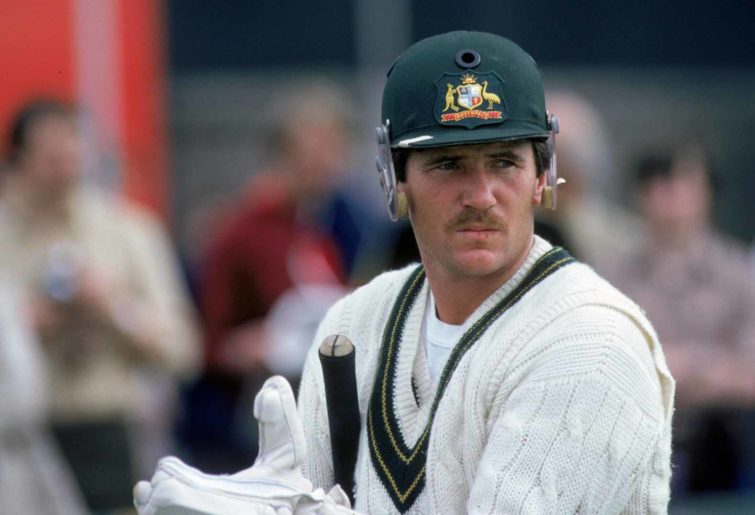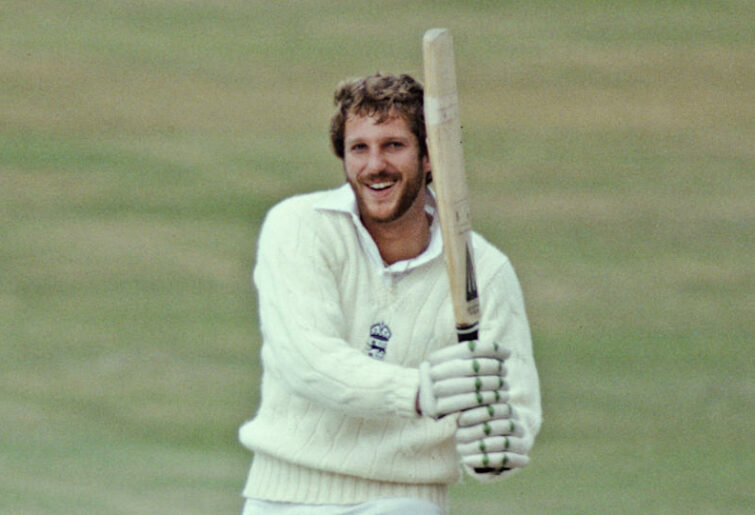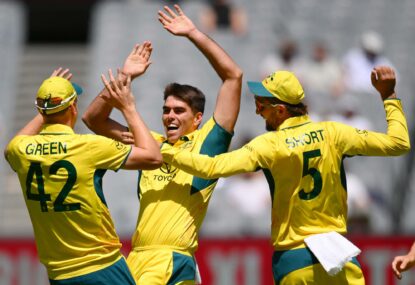Following Part 1, here are the top five in my list of great Test innings of the 1980s.
5. Mohsin Khan (Pakistan) – 200 versus England, Lord’s, 1982
This was the second Test of the series. The Pakistanis had lost the first Test despite a fine all-round display from their new captain Imran Khan, mainly due to some poor top-order batting. Mohsin Khan, the Pakistan opener, responded superbly to start the second Test with a career-best 200. And it eventually led to a famous victory as well.
It was an important innings for Mohsin himself. Although he had made his Test debut against England in January 1978, his inability to convert starts into scores had badly hampered his progress as a Test opener. He had scored his maiden ton at Lahore against the new boys Sri Lanka earlier in the year, but this Lord’s innings came as a turning point in his career.
Mohsin also contributed a quick-fire 39* from 43 balls as the Pakistanis won by ten wickets very late on the fifth day. This was only their second Test victory against England. The first came at the Oval way back in 1954.
It was a personal triumph for Mohsin as well. He was a member of the Pakistan team that looked hapless against the all-round brilliance of Ian Botham here at Lord’s four years ago.
4. Gordon Greenidge (West Indies) – 223 versus England, Old Trafford, 1984
Gordon Greenidge was a hero of the whitewash tour of England in the summer of 1984. There he joined an elite band of cricketers to score more than one double hundred in a series. His unbeaten knock on the final day at Lord’s took his team to a memorable win and his effort there gave him a permanent place in the history of West Indies cricket.
Initially, that Lord’s double century was my choice for the list. But it came against a bowling attack that didn’t have any plan or direction. So I have opted for the knock at Old Trafford, where England produced a disciplined bowling effort to restrict the Windies to 4-70 at one stage.
Another interesting point is that while Greenidge scored 223, Desmond Haynes, Viv Richards and Clive Lloyd between them contributed only four runs. Lloyd was especially upset as he had won the toss and decided to bat.
At the end Greenidge, along with Jeff Dujon (101) and night-watchman Winston Davis (77), took the score up to 500. Initially, both Ian Botham and local boy Paul Allott asked plenty of questions of the Windies’ batting, getting the ball to move in the air and off the wicket. But as the ball grew older, Greenidge and the others took full control.
The West Indies won the match by an innings and 64 runs. An interesting aspect of this match was that off-spinner Roger Harper took 6-57 in the England second innings.
3. Allan Border (Australia) – 100 not out versus the West Indies, Port of Spain, 1984
Most Australian fans remember the year 1984 for the two humiliating series defeats against the West Indies. But, actually, the series in the Caribbean started pretty well for Kim Hughes’ men.
They fought hard in the first Test before settling for a draw. Then in the second Test they were put in to bat. Joel Garner restricted them to 3-16, but a brave 98* by Border saw Australia reach 255.

(Photo by Adrian Murrell/Getty Images)
This score looked competitive as the Windies reached 4-129. But then a fine hundred by Jeff Dujon gave the home side a massive lead. As the Australians started their second innings, it was a case of batting out time to save the match. The fourth day finished with the tourists on 3-55.
The final day started well for the Australians with skipper Kim Hughes and night-watchman Tom Hogan frustrating the opposition bowling for quite some time. But then they left almost together to leave the tourists struggling at 5-115.
The rest of the day was a very simple story: it was Allan Border versus the West Indies attack. The West Indies’ four-pronged pace attack and the part-time spinners had no effect on him. But still it looked like that it would end in a defeat as the ninth wicket fell with more than 100 minutes left. The Australian lead was very small at the time.
But Terry Alderman bravely defied the West Indies’ bowling for 105 minutes to score 21* and at the other end Border completed a fine hundred. And the Aussies saved the match from the jaws of defeat.
2. Ian Botham (England) – 149 not out versus Australia, Headingley, 1981
It wasn’t an innings that pleased the purists. There were a number of moments of good fortune. In fact, most of the runs in the early part of the innings came from slashes, edges and mistimed hook shots, which fell in no man’s land.
It was an innings marked by courage, boldness and a determination to fight with his back to the wall. Of course, in the latter half of the innings, there were some moments of sheer brilliance.
His effort took England from 7-135 to 356, and the rest is history.

(Photo by Adrian Murrell/Allsport/Getty Images/Hulton Archive)
1. Kim Hughes (Australia) – 100 not out versus the West Indies, MCG, 1981
Terry Alderman is now best known as the bowler who used to get his out-swingers going perfectly in English conditions to create problems for the England batsman, especially Graham Gooch.
As a batsman, he was a genuine number 11, finishing with a Test batting average of 6.54. But surprisingly, he was involved in two of the most famous tenth-wicket stands in Australian cricket.
At Queen’s Park Oval, he gave company to Border to save a Test match. Here he accompanied Hughes as the West Austealian batsman played the innings of his life to set up a famous win.
Greg Chappell’s decision to bat first seemed a silly one with Micheal Holding proving too quick for the top order. Hughes looked solid at one end, but no one was able stay long enough with him. Dirk Wellham, Rod Marsh and Bruce Yardley all made useful contributions, but still Australia looked out of it, struggling at 9-155.
But then the tenth-wicket stand took the score to 198 before Alderman was caught behind for ten. Hughes remained unbeaten on 100.
Of course, the drama wasn’t over for the day with Dennis Lillee restricting the tourists to 4-10. But it was a day that belonged to Kim Hughes.
Ironically, Hughes’ Test career ended at the MCG with a pair against the Windies three seasons later. And it took Australia more than a decade and the arrival of their champion leggie to record their next MCG Test success against the Windies.






































































































